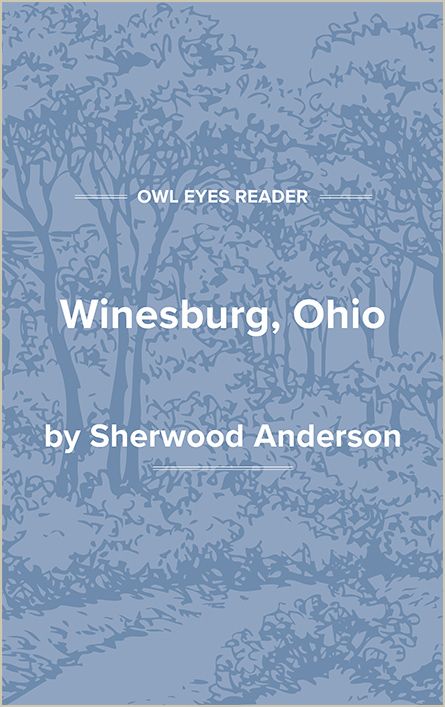Study Guide
Analysis Pages
Summary
Winesburg, Ohio offers detailed analyses of more than twenty of the residents of a fictional town in the region of Dayton, Ohio, and it introduces more than a hundred of the inhabitants of this community of some eighteen hundred people—the greatest number through incidental anecdotes and pointed, penetrating vignettes. The result is something akin to a novel, though there is no unifying story line and no central character or protagonist—George Willard, the young newspaperman, being merely the one through whose eyes the townsfolk are viewed.
The prefatory chapter, which concerns an old writer’s dream of a procession of grotesques, sets the pattern for the sequence of twenty-two stories that follows; the writer’s unpublished manuscript, “The Book of the Grotesque,” set forth his theory that the moment one took a truth and tried to live by it, it became a falsehood. Anderson’s book offers his implicit insight that any virtue that is overindulged or pursued uncompromisingly degenerates into its antithesis, a vice.
Winesburg, with its three doctors, three saloons, several churches, large residential hotel (the New Willard House, an ancient establishment), school, farms, newspaper office, and several specialty stores adjacent to the railroad station, is the quintessential small town of American legend. It is a quiet, gentle little town built upon the fundamental Protestant virtues and populated by industrious, frugal neighbors—or so it seems. Anderson, however, shows that Winesburg, representative of most small towns, harbors mainly people who are far from happy, successful, and contented.
His stories explore the backgrounds and private aspirations or motivations of representative inhabitants—doctors, teachers, clergymen, retailers, and shop assistants. All of them are, in one way or another, “alone and defeated” and living lives that are unfulfilled. They quietly nurse their hurts and failures, trying to hide them from others.
Most of the characters stand, lie, or sit by windows and doors: Symbolically they are separated, set apart from the town. Almost all are shown trying to reach out to touch others. Their hands are described in particular detail, such as Dr. Reefy, with his “gnarled knuckles”; Elizabeth Willard, with her “long white hands,” hands that are “white and bloodless”; and Tom Willy, the saloonkeeper, whose hands looked as though they had been “dipped in blood that had dried and faded.” Kate Swift, the schoolteacher, desperately wants to touch her former student, George Willard, as she (now thirty) realizes that touching is a necessary preliminary to intimacy, and she realizes that sexual intimacy is an essential ingredient of a full and satisfying life.
Further, most of the characters at some point seek out George Willard as someone they believe will be interested in them as individuals and not only as sources of newspaper copy. Kate Swift sees him as “rapidly becoming a man,” though he still has “the winsomeness of the boy”; that is, he has some of the qualities of the worldliness of age and some of the traits of the physically firm and attractive. It is this combination of characteristics—attractive mind and physique—that makes Willard appealing to many of the characters, even to the Reverend Curtis Hartman, the Presbyterian pastor whose wife is “afire with secret pride” in him. Hartman confesses, when he thinks about his wife, that he almost hates her because “she has always been ashamed of passion and has cheated me.” Most of the other characters are aware of their lack of sexual fulfillment also; many obtain temporary satisfaction through illicit or occasional assignations in the woods beside Waterworks Pond.
Significantly, most...
(The entire page is 908 words.)
Owl Eyes subscribers get unlimited access to our expert annotations, analyses, and study guides on your favorite texts. Master the classics for less than $5/month!

